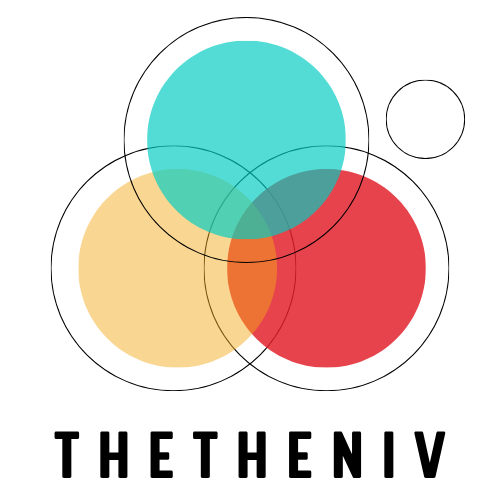Oglasi
Can your team turn disruption into a clear edge? This guide offers analysis and practical guidance, not promises. You’ll get steps you can test, measure, and tailor to your context.
Business adaptability is the lever many leaders miss. McKinsey finds highly adaptable employees are 2.5x more likely to perform at higher levels. BCG shows innovation ranks among top priorities, linking change to growth and success.
You’ll learn where your organization must flex, how to align leadership and teams, and how to track what works. This is written for executives, functional leaders, product owners, and team leads who steer strategy, operations, and culture.
The guide previews definitions, drivers, frameworks, people-centered practices, examples from Amazon, Microsoft, Netflix, Zara, IBM, and Adobe, and common pitfalls to avoid. You are invited to test ideas, collect evidence, and iterate—don’t copy a one-size-fits-all playbook.
Introduction: Why business adaptability is your edge in today’s market
Business adaptability is your edge in today’s market, where strategy windows shrink and choices must be tested fast. Rapid market shifts, AI, and automation compress planning cycles and make once-stable trends less reliable. You operate in a business environment where customer habits and tech change quickly, so iterative, evidence-led planning matters more than fixed roadmaps.
Oglasi
What this Ultimate Guide covers: clear definitions, key drivers, and proven frameworks such as the Modern Operating Model, OKRs with KPIs, CAAS, and C+MAC. It also walks through leadership, culture, enterprise agility, value streams, progress measures, and real cases from leading companies.
How to use the guide: pick the sections most relevant to your organization, choose two or three strategies, and run short, time-boxed pilots. Review outcomes monthly, measure what matters, and treat these approaches as guidance—not guarantees. Whether you lead a single unit or a broader organization, the playbook helps align strategy and execution under real constraints.
Defining business adaptability and the forces reshaping how you operate
Think of adaptability as a routine you design. It is your organization’s ability to shift priorities and operations quickly while keeping long-term outcomes in view. This practical view makes change testable, measurable, and repeatable.
Oglasi
Core components you can design for
- Agility in decision cycles so teams act faster.
- Innovation pipelines to turn ideas into experiments.
- Transparent goals and clear, visible priorities.
- Flexible resource allocation that matches demand.
- Collaboration tied directly to customer value.
Signals and external forces
Operational signals of strong change-readiness include shorter lead times from insight to action, fewer handoffs, and faster learning loops. External drivers—globalization, technology, and big data—raise customer expectations and speed up industry shifts.
Market shocks such as the dot‑com crash, the 2008 financial crisis, and the 2020 pandemic show how fast models can break. When adaptability is weak, decisions slow, teams misalign, and duplicate work appears.
Start with a simple diagnostic: map where value is created in your industry, then pinpoint where market changes and customer behavior create new constraints or opportunities.
Why it matters now: From market shocks to technological disruption
Recent shocks and rapid tech shifts mean leaders must rethink how quickly they move from insight to action.
Market jolts and lessons learned: The dot‑com burst (2000), the 2008 financial crisis, and COVID‑19 (2020) each forced firms to remake distribution, pricing, and supply chains on tight timelines.
Many companies had to change product delivery and channel strategy in weeks. That reality shows you must design systems that handle sudden market changes.
Technology as an accelerator
AI, automation, and cloud shorten the half‑life of strategic bets. These tools speed execution, but they also raise competitive intensity.
Shorter planning cycles mean you should refresh roadmaps more often and run smaller experiments to test new ideas.
The cost of non‑adaptivity
“Slow approvals, unclear ownership, and overlapping projects drain time and efficiency.”
- Slow decisions delay customer feedback and reduce time to learn.
- Misalignment creates duplicated work and saps efficiency.
- Widespread disengagement — as many as 79% of employees report low engagement — amplifies turnover and misdirected effort.
What to do next: design faster decision rights, clearer scopes, and lighter governance so signals turn into action sooner.
Finally, remember that highly adaptable employees perform better and engage more when values and environment align. Link your structural changes to how people work and you improve outcomes across the market.
For a broader perspective on disruption as opportunity, see rethinking disruption.
Proven frameworks to build adaptability into your operating system

The Modern Operating Model
Balance steady delivery with flexible change: combine routine planning cadences with quick resource shifts so core operations stay reliable as you try new approaches.
- Set weekly or biweekly planning pulses for short-term work.
- Maintain a reserve of resources to fund rapid experiments.
- Use transparent dashboards to align teams and leaders.
KPIs and OKRs: run and change at the same time
Use KPIs to stabilize uptime and quality while OKRs drive new outcomes. For example, keep a quality KPI and an uptime KPI, and set an OKR to increase new product adoption or cut cycle time.
- Quarterly objectives with 2–4 measurable key results.
- Shared visibility and monthly reviews to adjust scope.
- Link one OKR to a small cross-team experiment each quarter.
Assess and grow skills: CAAS and C+MAC
Baseline teams with CAAS—concern, control, curiosity, confidence—to target development and coaching. Pair that with C+MAC to build cognition, motivation, action, and connection.
Use assessments to support growth, not to penalize performance.
Simple pilot plan: pick 1–2 processes, instrument KPIs/OKRs, measure CAAS at start and after one quarter, then adjust training and resource allocation.
Respect privacy, explain purpose, and tie measurement to development and ethical management.
Adaptive leadership and culture: Turning mindset into competitive advantage
How leaders behave sets the pace for experiments, decisions, and learning. When you align leadership with clear habits, your teams move faster and fail smarter. Use real examples to guide practical change in your organization.
Leadership in action
Amazon’s Day 1 mindset keeps teams customer-focused and quick. PepsiCo’s shift under Indra Nooyi shows how portfolio choices steer long-term work toward healthier products. Microsoft’s cloud and AI pivot proves short decision cycles scale into major market moves.
Culture levers you can adopt
- Learning rituals: weekly retros and monthly demos.
- Cross-functional planning: joint roadmaps to reduce handoffs.
- Flexible work norms: trust-based schedules that boost ownership.
Communication, safety, and fit
Transparent goals cut resistance. Explain the why, the expected gains, and measures of success. The 2024 BMC Psychology study found that adaptability links to engagement when person‑organization fit is strong.
“Clarify values, role expectations, and feedback channels to increase engagement.”
Praktični koraci: publish quarterly objectives, host monthly stakeholder demos, invite customers to review results. Role-model curiosity: ask for disconfirming evidence and reward learning from experiments, not just wins.
From strategy to execution: Embedding agility where value is created
Move from plans to impact by embedding agile routines in day-to-day work. Start small and focus on the places that directly touch customers. This helps you prove value fast and scale what works.
Agile’s evolution across the organization
Agility began with teams in the 2000s, scaled in product and IT in the 2010s, and now extends into the whole organization. Enterprise agility ties strategy, finance, HR, and operations so units respond coherently.
Start where it matters
Map your value streams and pick the ones closest to customers. Improve cycle time or quality there first so gains show in outcomes and engagement.
Set clear adaptive cycles
Plan quarterly OKRs, hold biweekly or monthly reviews, and collect continuous customer feedback. Time-box experiments, name owners, and set WIP limits to protect capacity.
Measure progress
Track focus, responsiveness, quality, innovation, time-to-market, and engagement. Use baselines, then measure change against the baseline and adjust resources and strategies as you learn.
Real examples, common pitfalls, and pragmatic solutions
Real-world transformations reveal patterns you can adapt to your own teams. Study how companies shifted strategy, then pick practical steps that fit your constraints.
Transformation snapshots
- Netflix: moved from DVD mailers to streaming by betting early on networked delivery and licensing.
- Microsoft: reoriented its core to cloud and AI, aligning product strategy with platform services.
- Adobe: switched to subscriptions to stabilize revenue and speed updates to customers.
Operational and cultural lessons
- Zara: uses short cycles, in-store feedback, and tight design-to-shelf flow—an operational template for fast sensing and response in any industry.
- Google’s culture scales innovation through small bets and psychological safety you can emulate at team level.
Avoiding common traps
Don’t copy a framework wholesale or over-centralize decisions. Legacy systems, limited resources, and fear of change stall progress.
“Adaptation grows through evidence-based iteration, not one-time overhaul.”
Practical fixes: pilot in a narrow scope, co-design with frontline teams, modernize critical legacy pieces incrementally, and measure quarterly value realized. These steps let your organization test, learn, and scale what actually works.
Zaključak
,End with a practical reminder: small pilots and clear metrics win over grand redesigns.
Start by selecting two or three strategies from this guide—use the Modern Operating Model, OKRs with KPIs, or CAAS and C+MAC as a testing ground. Set a simple planning cadence, reserve modest resources for experiments, and name owners who track outcomes.
Measure both run-time KPIs and change-focused OKRs. Combine skills assessment with development plans so teams and individuals gain the ability to learn faster and deliver growth. Transparent goals and monthly reviews help you spot opportunities, retire low-value ideas, and scale winners.
Tailor the approach to your industry and needs, involve team members early, and consult experts when needed. The result is a repeatable model that turns market changes into advantage and sustained success.



